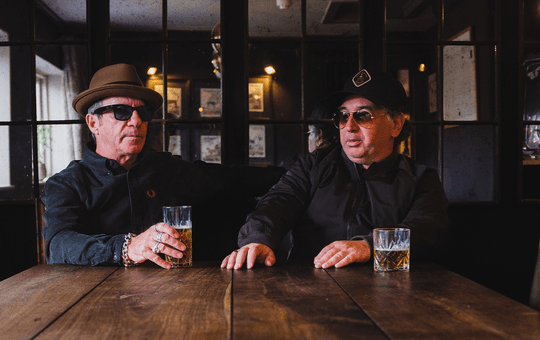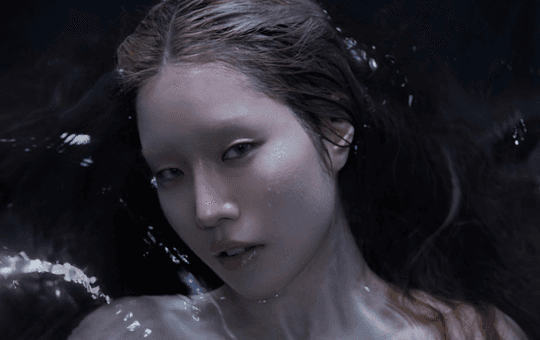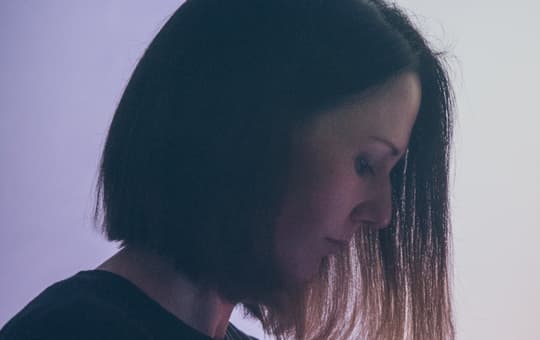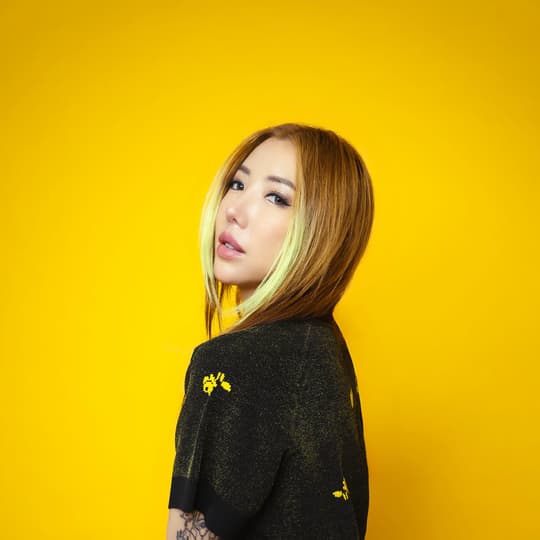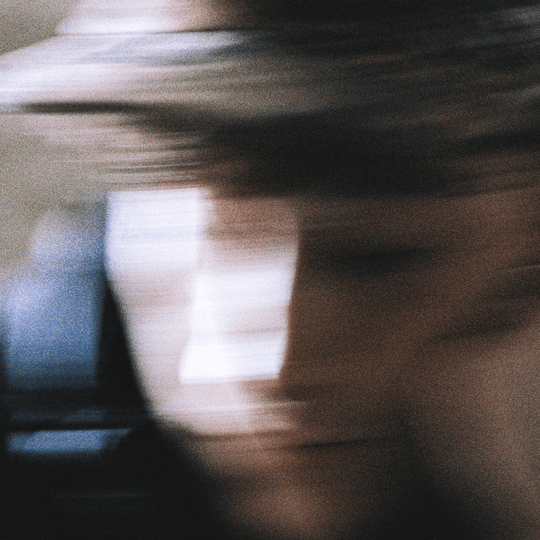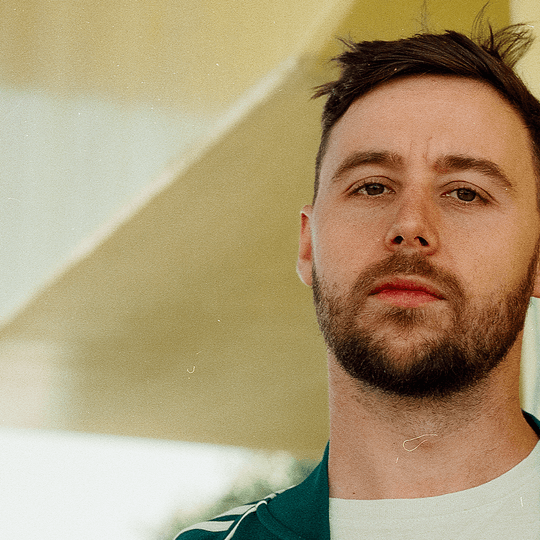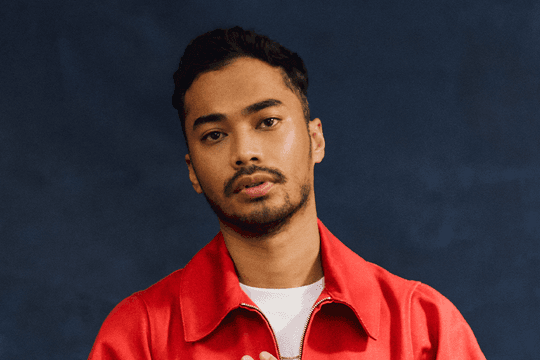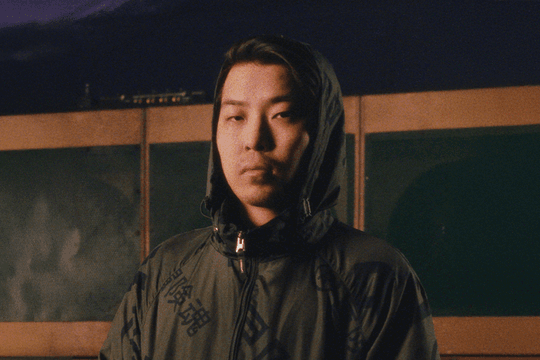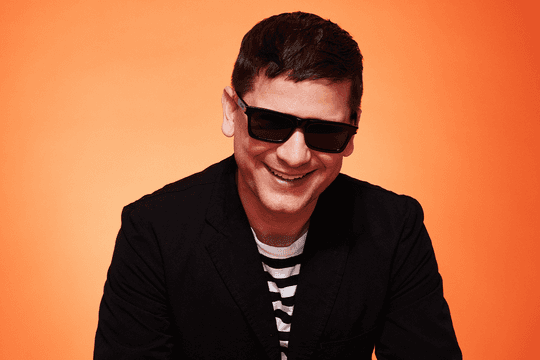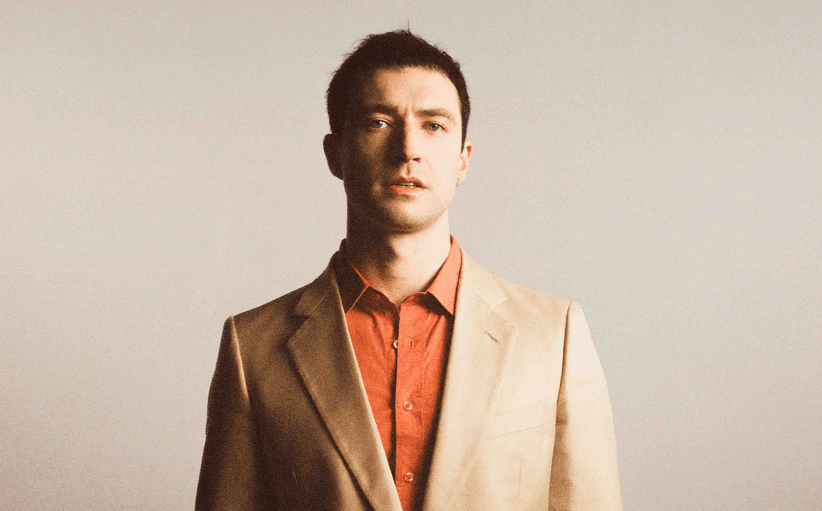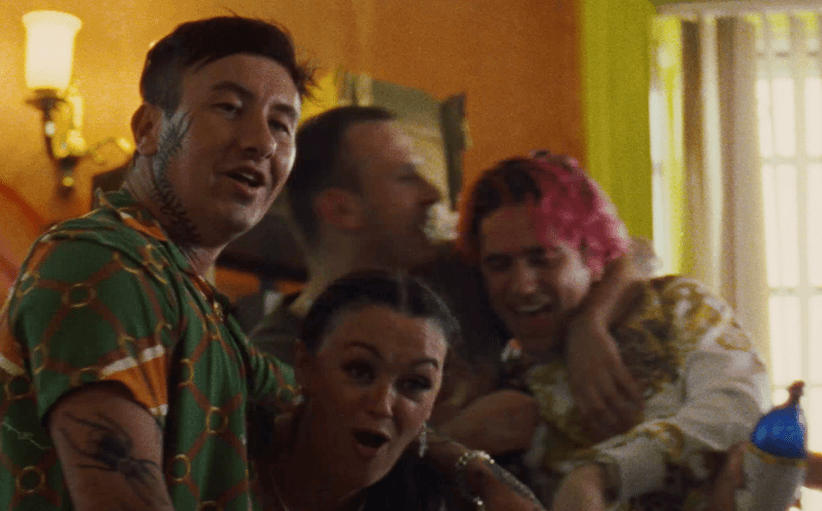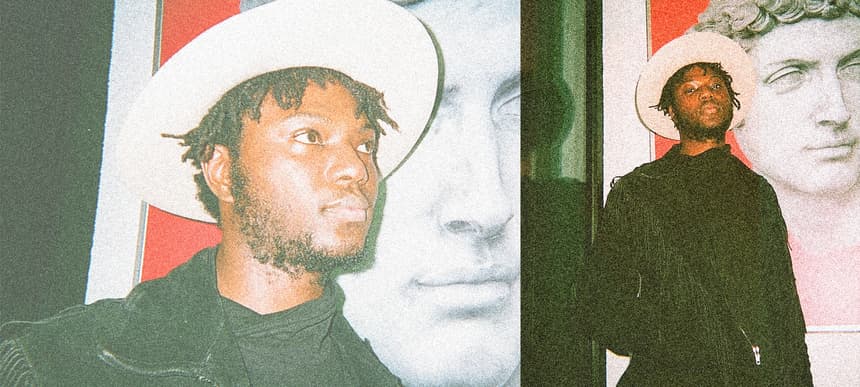
The Art Of Noise: Emmanuel Adjei
By now, you’re probably familiar with one of the strongest new additions to London’s streetwear scene, Patta; a label that has become an epitome of Amsterdam’s growing international influence. What’s helped to build the brand’s name in its second home is its visual storytelling, particularly fashion films, that go well beyond any genre conventions. The man behind Patta’s latest series is Emmanuel Adjei, a Dutch mixed-media artist who has carved a unique niche in the otherwise saturated industry, gliding smoothly from film to painting, even poetry.
Emmanuel is not in it for the accolades. His work, honest and infused with a sense of mystery, explores the profound ways in which sound affects our perception of the surroundings, not vice versa, placing emotions and rhythm at the center of his research. For Emmanuel, it’s been a path of his own making. Having started out in fine art and now with a Cannes plaque to his name, Emmanuel’s work has traveled well beyond the coasts of Holland, following the success of projects for the likes of Soulection, Jarrau Vandal, and Soft Powers.With imagination and mutual respect at the core of everything he does, his approach seems to embody the perfect balance between meticulous planning and serendipity. A lot of directors favour collaboration but very few seem to nail it as well as Emmanuel. He chooses his circle wisely, yet the ones who make it to the top become lifelong collaborators, such as Patta and Sevdaliza.
In December, Emmanuel dropped by London to meet his new agents at Compulsory. Taking a break from planning his next music video, Emmanuel spared a moment to catch up with DUMMY to take us through the creative process behind one of last year’s most ambitious music videos, The Formula, as well as share his perspective on the burgeoning creative scene in Amsterdam.
PATTA SS 16 "Concept of Wind" from Emmanuel Adjei on Vimeo.
_________________
Interview by Undine Markus
Tell me about your workflow, how do you usually approach new projects?
It always begins with a concept which I gradually build upon. The idea is in constant development up to the day of the shoot, even on the day of the shoot.
What are your tips for embracing change at the last minute?
I’m quite flexible, as long as the project does not lose its essence. Especially when it comes to technical aspects. I guess you always need to bear in mind what the essence of a particular scene is. Sometimes you need to be challenged to strip away all the secondary parts and get to the core of it and streamline everything. For me, serendipity is very important because it gives a lot of freedom to learn and explore. It also makes the project more dynamic. I always tend to use that in my favour, almost yearn for that. It is also just a part of the medium, often you do not have the budget to ensure that everything is planned in advance. With music videos it is all about the timing. Along the way, you learn how to handle and use challenging situations to your advantage. The main thing is to have fun while creating!
How do you go about forming the team for each project?
It always stems from the concept of the project and the aesthetic that needs to come with it. You either need a certain type of production designer, or a certain DP (director of photography). I try to picture that as early as possible. It is always about the team as a whole, rather than a specific person. All of them need to click and feel the concept.
What are the numbers we are speaking of?
For instance, for my last project we had about 25 people in the crew. For short films it is different. Sometimes you just have a small team but a lot of effort is directed towards the post (-production). I have edited almost every single project that I ever worked on. The last two projects I handed to an editor…it was a gut feeling. I have finally managed to find an editor who thinks the same way as I do. That’s a beautiful thing! I also edit with my co-writer. It is a different kind of process when you work with people you already know and trust. You just build a core team and work around it when the next project comes, you outsource.
What impact does editing with the co-writer have on the final product?
When you develop something, either with a writer or a DP, and I’m saying this only because those are the people I typically go to first, it facilitates a very collaborative process. You know how they say that each film is developed in three stages- concept, shoot, and post (-production). In order to achieve consistency, I work with the same people. It is good to have a consensus about the concept amongst the entire team. Take Sevdaliza. She is also a writer and a visual artist. She was involved throughout the whole project. She started her career in video so she knew what she wanted to achieve.
Human, for instance, was based on a concept that we developed and shot together. We even joined the editor to work out how the music flows with the imagery. It’s a very interesting way of working, it ensures a clear perspective. As soon as you have a concept that is driven by the music, it is hard to get sidetracked.
Speaking of Sevdaliza, tell me more about the process behind The Formula?
We wanted to make a music video for this one track and keep it there. Then, we wrote a concept for one of the scenes, the opening scene in the water. Soon we realised that it had so many layers on its own – it was so symbolic! We had to develop some sort of visual poetry around it. We decided to see how far we could take the initial scene. We assembled a crew in order to think of how we could enrich the story. Sevdaliza wrote two tracks to accompany the script. She literally wrote them during the process, while we were creating the storyline… it was a very unique way of working because it was completely organic. It was a unique formula (laughs). The script was lead by music. The project did not come out as a music video, nor a short film… it lies somewhere in-between and I think that’s what’s so beautiful about it.
How long did it take you to develop it?
It took us almost six months to just nail down the concept and source the locations. We shot it in Poland, near the border with the Czech Republic.
Why did you choose to use multiple languages?
It was an interesting thing- Sevdaliza is Iranian and so was her partner in the video. But then we also had this Dutch/ Polish/English crew. The whole process was just such a strange linguistic synergy! Sevdaliza speaks English the moment she becomes crazy. It was part of the script…we prepared a character breakdown for every single stage that she was going through. Every move she made had to make sense.
The reason why we chose to integrate Farsi, well, first of all, its is a beautiful language. Secondly, we wanted to play with language and how that linked to the different roles she had as a woman- the lover, the mother who had a miscarriage, the artist. We wanted to emphasise the turning point when she goes mad. We found language to be a powerful tool to mark the difference between the different points.
Could you tell me more about the poem you used?
The poem was something that Sevdaliza wrote during the process of production. You can’t write something like that prior to the shoot, it’d have felt forced. It was far from the starting point in this case. I just said, Sevda (Sevdaliza), I need a poem, this scene needs a poem. And she was so on point because she’s a visual artist she knew exactly what it needed!
In the video, the moment we hear that poem, as a character, she’s already gone because it’s off-screen. Every single detail matters. Working with a crew that understands where you’re coming from, the poetic language you’re after, that’s the only way to make it work.
There seem to be parallels across many of the locations you use in your work. Are single portraits and vast, emotive landscapes something you consciously strive for?
I am not saying it is a signature thing, but that’s something I always look for. I studied Fine Art in Utrecht, followed by a film school in Belgium. At the art school, I did a lot of video installations and photography that looked at the relationship between an object and its context. Context as a reflection of someone’s inner state. I’m interested in exploring how cultural background shapes us. Early on, I developed my love for design, architecture, and the beauty of nature. The vast landscapes in my videos enrich the character and say more than just a portrait would.
The second Patta film that we shot on 16mm consisted of only 7 cuts but it was not shot at once. We traveled almost three hours just to get one of the shots; the ruins of this old chapel. Every project I get my hands on, there is almost never a clear sense of time which, in turn, makes the piece timeless. I guess my love for classical cinema is to be blamed not only the likes of Tarkovsky or Béla Tarr, but also directors like Paul Thomas Anderson, Terrence Malick, and anyone else who speaks in a poetic language. For me, every frame needs to be a painting, it needs to grab you from the very start. In order to achieve that, you get need to pre-visualise it a lot.
So would you say that location scouting is key to your projects?
It is not as much about the locations as it is about the approach. Only when you have a clear vision of the concept is when you find the right spot. Every single location is shaped by your expectations and projections. The locations come secondary. The concept, always, comes first. For instance, the second Patta video came from an idea of the Patta guys seeing a bright star in the sky that directs them to… (laughs) London. The promised land! We started out by filming on the seaside. Because, if you look at it that way, Patta, literary, had to cross the sea in order to expand so we shot it there first. Eventually, it was no longer about the water as we captured the magic in the shot of the sky and the stars.
Patta – Three Kings from COMPULSORY. on Vimeo.
I feel like the sound design enhanced that project a lot. I am definitely a filmmaker who puts sound first. With the lens you can define someone’s view but not their feelings, not on the same level as you can with music. When someone approaches me with a track, I tend to listen to it as sound waves and try to resonate with it as opposed to looking for a concept or finding out what the certain artist is about. I treat each piece as an autonomous piece of work that either speaks to me or does not. Vocals are either musical or merely have an auditive quality, you can always hear the difference. I never look at music based on genres. I believe it is through the juxtaposition of sound and image that you can achieve the most immersive projects. You should not expect to like or dislike a certain sound, you need to seek to understand how it moves you, what are the emotions it makes you feel.
Speaking of genres, seems like the future beats scene is really having a momentum in Amsterdam.
Yes, it’s almost on its way out! The Amsterdam scene is popping these days thanks to the Internet, and Young Internet (embed: https://soundcloud.com/yung-internet), of course. The good thing about Amsterdam is that it’s small yet has a very international approach to the industry. It’s an enabling thing to say that you’re from Amsterdam. However, it seems like the majority in the future beats scene looks up to the UK or the US because we have not found our own sound within the genre yet.
Do you feel like it might be due to the shortage of local outlets, considering the strong presence of internationals like Darker Than Wax and Soulection?
I think there are enough outlets. It has more to do with the scene. If you want to be progressive, and we are not talking about the EDM scene here, you look up to the internationals when starting out. Our local sound, apart from EDM, is still developing so I feel like it might just the stage that we are at.
What are some of the local collectives that are placing Amsterdam on the map at the moment? I’m familiar with the SMIB guys who seem to be at the forefront of the current scene.
To be honest, I do not feel as involved on the grassroot level as I used to be, as I spend a lot of time abroad these days. My approach is very international and I have been in the UK a lot. Nowadays, it does not matter where you’re based as long as you’re close to an airport… and there are Ubers around (laughs).
Interestingly, the SMIB guys made their first moves in the neighborhood I grew up in. It is almost like they are the Dutch Odd Future. They really stand out because of this perfect balance between locality and a truly international approach. I am excited to see how they will market themselves on an international level. Same for Young Internet. Especially, when it comes to language. It has been the only thing that has set us back. One thing I really admire about Amsterdam is that the crowd looks up to the local talent as much as it does to the international names. I guess in that sense Amsterdam is unique. It is different to Berlin or even London in that regard. I think it is because the output we produce could be on an international level and it is only the language barrier that is not allowing for it to travel globally.
Lastly, why fashion? And why Patta specifically?
The things I did for Patta, they are viewed as fashion films just because they are connected to a brand. Otherwise, if you look at the videos without the context, they could be just short films. They are visual poems. And that is what Patta are all about- it’s an attitude, a mindset that each piece has to be able to stand on its own. I have been friends with the Patta team for a while now. I got into that circle way before I started making films. I guess I resonated with their vision. They felt that my work fit their aesthetic and were open to a collaboration. It is also the way I work, you either click from the start or you don’t.
